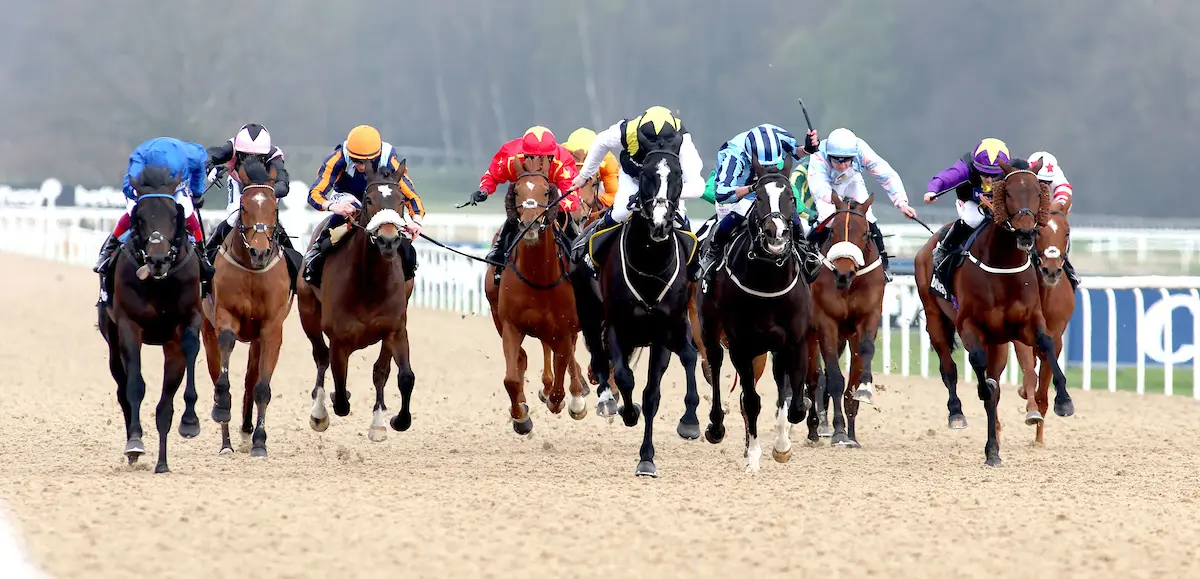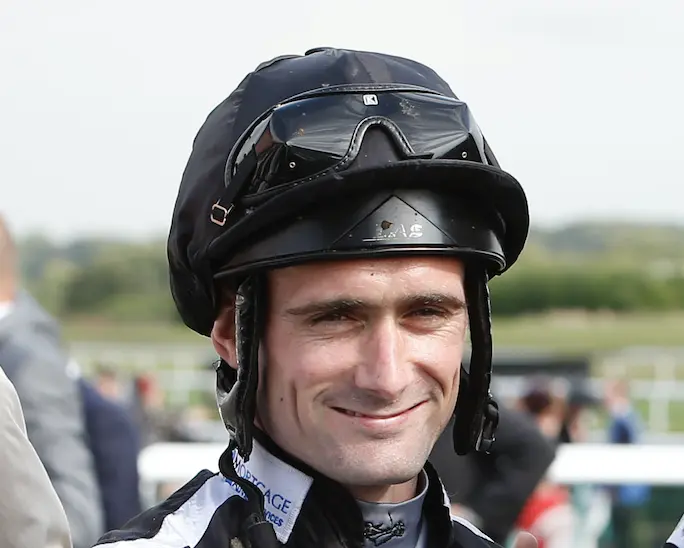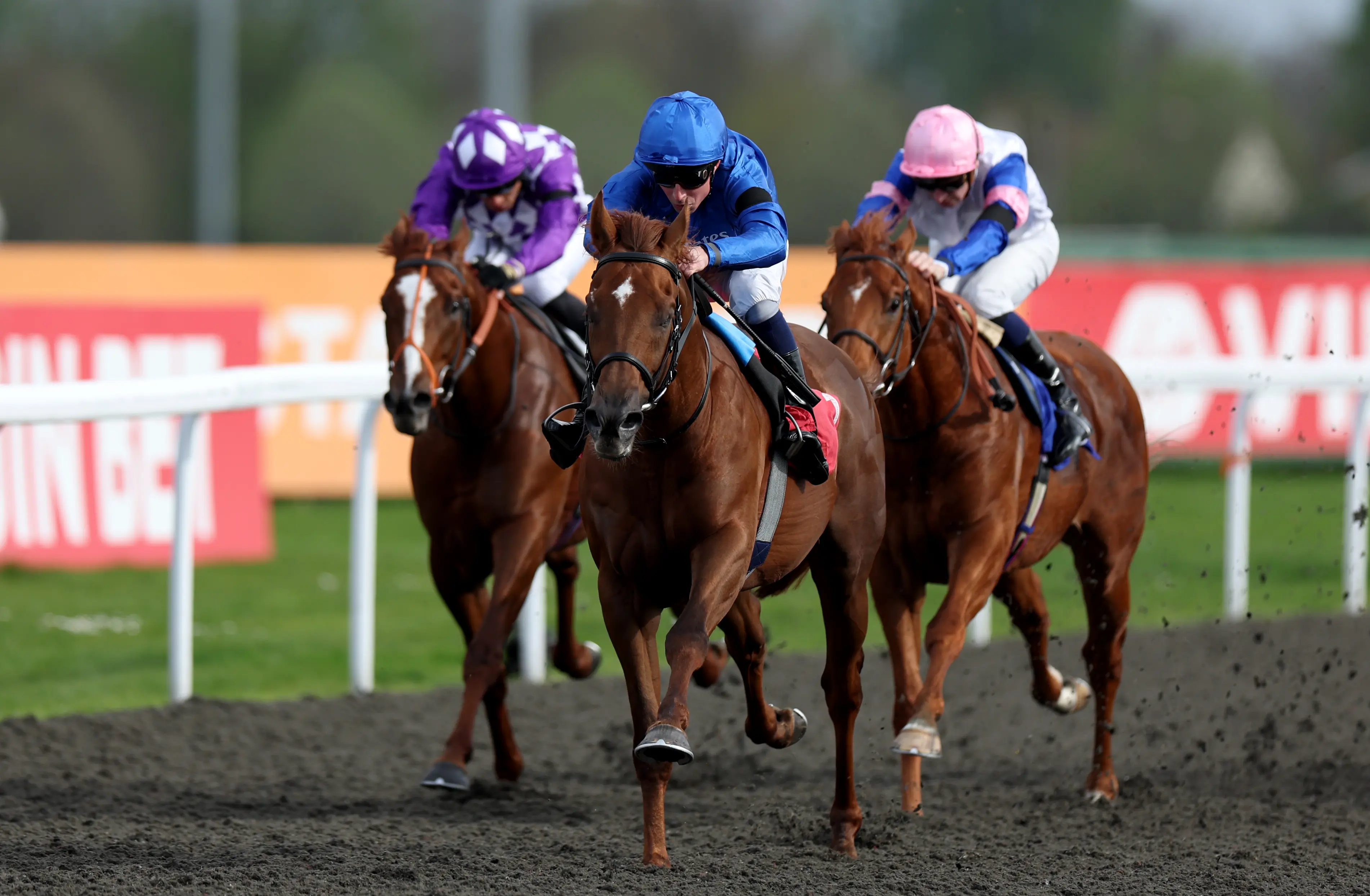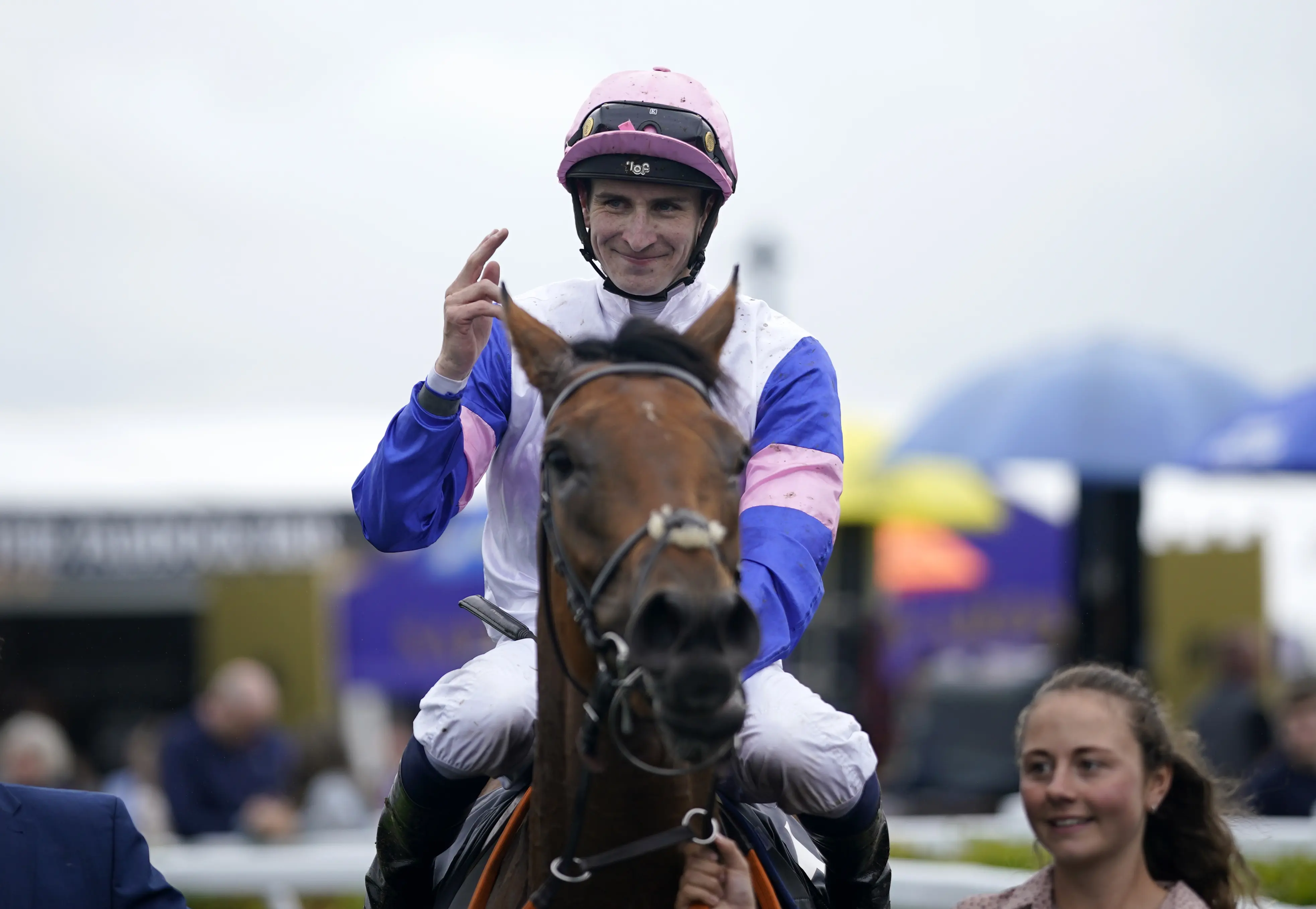Login
Free Trial

Paul Mulrennan's top guide to the all-weather courses

By Paul Mulrennan
Last Updated: Thu 28 Nov 2024
The core all-weather season is in full swing, providing domestic Flat action through the winter. In his final column as Racing TV ambassador, Paul Mulrennan gives the low-down on racing on artificial surfaces.

How does riding on the all-weather compare to riding on turf?
I would say on the all-weather that gate position is more important than anything else. You need to get your position, or at least know where you’re going to be. Obviously, that is similar on turf, but on the all-weather, once you have jumped and gone a hundred yards or so, the positions of the horses can often stay the same.
Horses don’t tend to fall away in the same manner as on turf, so there’s usually less racing room. There are more variables on turf, uphill gradients, types of turf (firm to heavy) and so on. All-weather racing is about getting from A to B, and you need to have your pitch.
To what extent is there variation across the all-weather racecourses?
All the all-weather tracks are different. I’ll give you an example. I rode a horse at Newcastle recently over a mile-and-a-half. It’s a stiff track there, and one thing you must do is to get your horse to relax.
Horses that are keen don’t usually get home, which was always the same on the old turf track. The horse in question competed there in broad daylight at 3.30pm and then a few weeks later he was at Southwell in the evening, where I’m adamant that he wasn’t keen on the floodlights. He is a young horse, a little babyish, and was backing off for the whole race. He simply wouldn’t pick up the bridle.
The five-furlong tracks at Newcastle and Southwell couldn’t be anymore contrasting, and even over six furlongs there’s still a significant variation.
At Southwell – as with the previous Fibresand surface – you must possess gate speed, establish a handy position, and then be able to travel. At Newcastle, you have the time to ride more of a considered race.

How does the weather impact on riding the various all-weather racecourses?
It has a direct influence on races. I ride Newcastle more often than anywhere, and that’s a wide-open track - the biggest circuit of all - where conditions can change from race to race. You can easily be facing a stiff crosswind before a sharp change into a headwind. I don’t know why, but I never find Southwell impacted by the wind in such a manner.
I always like to know what I’m going to be facing when riding at Newcastle. The conditions weren’t too bad last weekend, but I’d still upgrade the performance of Night Raider in the Golden Rose.
I rode in the race, and we were going a proper gallop, yet he was able to pick up and go again between the three- and two-furlong markers. Karl Burke’s charge looks a special horse.
Cold temperatures, and significant rainfall also impact the way in which the track can ride. In simple terms, if you walk down the beach on a summer afternoon, the surface is deep and hard work, but when it’s wet - say when the tide has gone out or closer to the sea - it is much easier to walk along.
Newcastle really tightens up and rides quick when it’s wet. By contrast, for the Northumberland Plate fixture in June it’s usually tough, testing and not overly pleasant.

Newcastle is the best all-weather track in the country (focusonracing.com)
What is the fairest all-weather racecourse to ride?
For me, Newcastle is the best all-weather track in the country. The turf track there was one of the best in England. All the leading trainers would send horses there because it was viewed as a fair galloping track, and that’s still the case now on the all-weather.
I would say that it has taken us jockeys a while to get the hang of riding there, but I have noticed recently that horses can make the running on the round course.
It was almost impossible to win from the front over 1m2f, 1m4f, or two miles at one time. However, nowadays, if you can get your fractions right, good, and even, you’re in business. Oisin Murphy’s fine ride aboard The Foxes in the Churchill Stakes is a recent case in point.
On the straight track, if you are unfortunate to miss the break, even from a moderate draw (low), you still have time to tack over and seek to recover.
What is the trickiest all-weather racecourse to ride?
The draw dictates at Lingfield, Chelmsford, Southwell, Kempton, and Wolverhampton. At Lingfield the draw is more important than anywhere else. At all those tracks, you constantly find yourself galloping into a bend. It is a difficult position to be in when you either miss the break or find yourself caught wide around Lingfield or Chelmsford.
That is also a similar scenario in the sprints – 5f, 6f, or 7f – at Wolverhampton. Such races revolve around being in the optimum position at a sharp, speedy track. If you find yourself in a poor position, you must suck it up and deal with the consequences. The context of a race isn’t going to change.
What type of horse is ideally suited to all-weather racing?
I have always believed that horses will do what they’re trained to do. Trainers use similar surfaces at home which can be kind to horses. With the all-weather you know what you are getting, a flat, level playing surface. It’s perfect. On turf, there are many types of tracks – right or left-handed – which can pose different challenges.
All-weather racing has become a core part of the business for many trainers and jockeys. How do you see the future?
I possibly shouldn’t be saying this, but I wouldn’t be surprised to see more all-weather tracks emerge. Not necessarily over the next five years, but over the next 20-25 years.
The surfaces are much easier to maintain, and, in the world, we live in nowadays, people want everything yesterday. The climate is another factor to consider, with the jumps trainers currently desperately seeking rain.
When I first got into racing, working with for the likes of Brian Meehan, Pat Haslam, and Mick Easterby, the ground was seldom mentioned.
Nowadays, I’m constantly asked, “what’s the ground like?” “is it too quick” etc. Everyone is fascinated by the ground conditions.
Trainers are now becoming accustomed to preparing their horses for Classics on the all-weather, with Charlie Appleby and John Gosden being the most obvious examples.
Winning a pair of novice races at Kempton is now a ‘normal route’ to the Guineas and, with such good prize money on offer, you can understand why. When you run a horse on the all-weather, you aren’t looking over the stable door the next morning, worried about what you’ll potentially see. At the lower levels of competition, trainers can run their horses more regularly, with increased confidence that the horses are protected. It is important to acknowledge that racehorses are professional athletes.
Can you nominate a horse, trainer, or jockey to follow on the all-weather over the winter?

Crouch has stepped up to the next level
I’ll nominate a jockey and go for Hector Crouch. Hector has always been able to ride, but I feel he’s taken his chance and really stepped up to the next level to become a very good jockey. He has formed a strong partnership with Ralph Beckett, who is himself a top-drawer trainer.
Having worked in the industry for many years, I can fully appreciate what he has achieved as a trainer with Bluestocking and Starlust. To go from the Nunthorpe Stakes, to being unlucky in France, and then winning a Breeders’ Cup Turf Sprint takes some doing. He’s a trainer who isn’t afraid to run his horses and is reaping the rewards for adopting such an approach. All three jockeys - Rossa Ryan, Hector and Rob Hornby – associated with Beckett yard are fully accomplished riders with a hunger and desire to succeed.
I’d also give a positive mention to Jason Watson who has a strong link-up with Andrew Balding and is also riding regularly for David O’Meara and Mick Appleby. He’s going to be riding good horses for strong stables, so I can see him having a productive winter.
Farewell and thanks to Racing TV
After nine successful years as a Racing TV Ambassador, our partnership is ending. I’d like to take this opportunity to thank everyone associated with Racing TV for their support over those years and wish everyone all the very best for the future. Signing off, PJM.
Copyright 2025 Racing TV - All Rights Reserved.
Please bet responsibly
Copyright 2025. All rights reserved